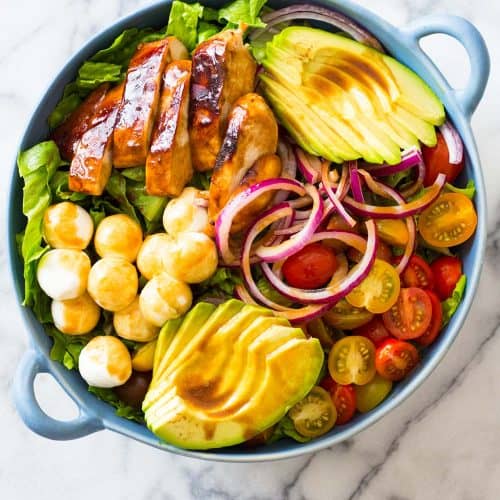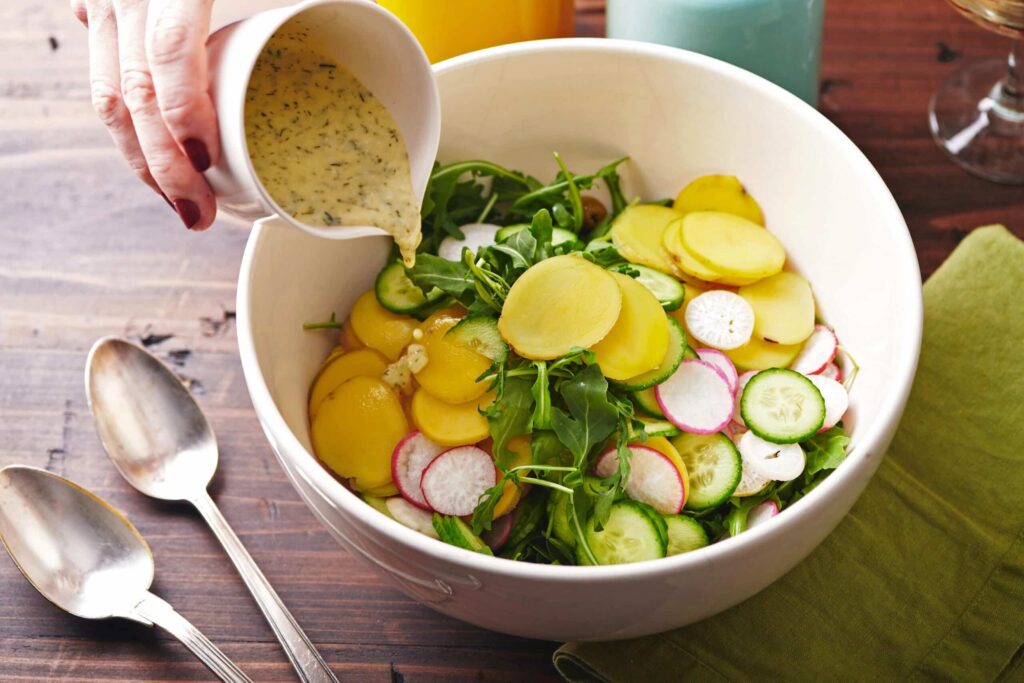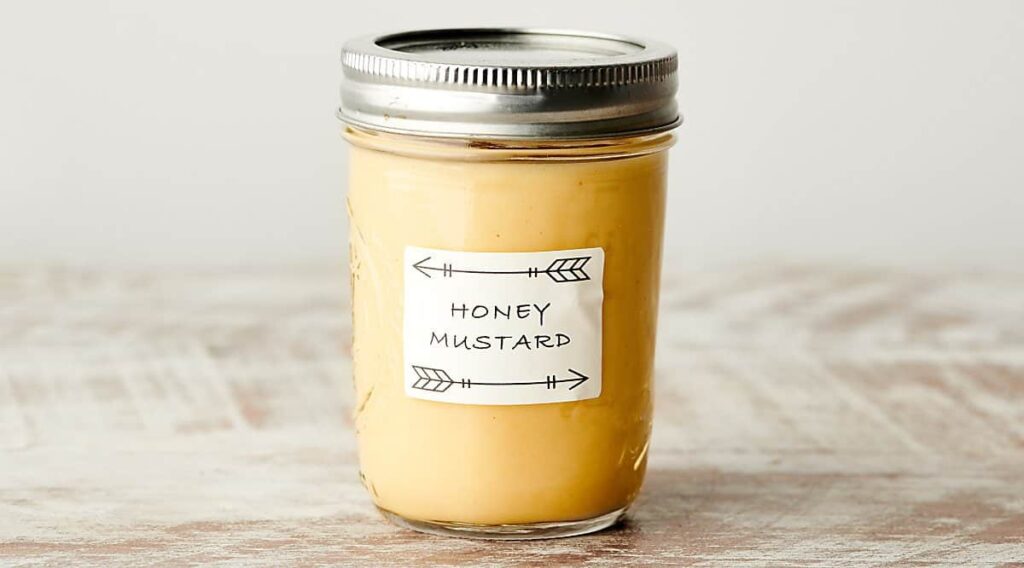Welcome to the Tastetrove, tangy world of honey mustard dressing—a versatile condiment that’s as timeless as it is delicious. Whether you’re tossing it with crisp greens for a quick lunch, using it as a dip for crispy chicken tenders, or glazing roasted vegetables, honey mustard brings a perfect balance of sweetness and zest to any dish

The Fascinating History of Honey Mustard Dressing
Honey mustard isn’t just a modern grocery aisle favorite; its origins stretch back thousands of years, blending ancient culinary ingenuity with simple, natural ingredients. The story begins in Ancient Egypt, around 3000 BC, where honey—a prized sweetener symbolizing immortality and used in everything from embalming to baking—was combined with mustard seeds for preservation and flavor. Egyptians ground mustard seeds into a paste and mixed them with honey to create a condiment that masked the bitterness of meats and added a subtle heat.
Fast-forward to the Roman Empire in the 4th century AD, where agronomist Palladius documented one of the earliest written recipes for honey mustard. In his agricultural treatise, Opus Agriculturae, he described a mixture of ground mustard seeds, honey, and vinegar as a versatile sauce for commoners’ meals—perfect for dipping bread or enhancing stews. This Roman version laid the groundwork for Europe’s love affair with mustard, which evolved through the Middle Ages. During this era, monasteries in France and Germany refined mustard-making, often infusing it with honey for a sweeter profile to appeal to nobility. For more on ancient condiments, check out our internal guide to historical salad dressings.
By the Renaissance, honey mustard had crossed continents. In India and China, where mustard has been cultivated since 3000 BC, it appeared in curries and as a table sauce, sometimes sweetened with local honeys. European settlers brought these techniques to the Americas in the 17th century, where Native American influences added wild honeys and native mustards, creating regional twists.
The modern honey mustard dressing as we know it—creamy, emulsified, and salad-ready—emerged in the 20th century. A pivotal moment came in 1942, when it was first mentioned in American cookbooks as a lighter alternative to mayonnaise-based dressings. Legend has it that a restaurateur in the U.S. (possibly inspired by French techniques) invented the creamy version by blending mayonnaise with honey and Dijon mustard, sparking its popularity in delis and diners. Post-World War II, with the rise of suburban cooking and backyard barbecues, honey mustard became a staple for chicken dips and potato salads.
Today, it’s a global sensation. In the UK, it’s slathered on sausages; in Australia, it flavors lamingtons; and in Korea, it stars in a manhwa comic titled Honey Mustard—a testament to its cultural reach. External link: Explore the full timeline on Wikipedia’s Honey Mustard page.
Key Ingredients and Their Health Benefits
At its core, honey mustard dressing is a symphony of just a few ingredients: honey, mustard, vinegar or lemon juice, oil, and sometimes mayonnaise or yogurt for creaminess. Each plays a starring role in flavor and nutrition, making this dressing not just tasty but a smart addition to your meals. Let’s break it down.
Honey: The natural sweetener that tempers mustard’s sharpness. Opt for raw, unfiltered varieties like clover or wildflower for maximum benefits. Honey is packed with antioxidants, enzymes, and trace vitamins (like B6 and C) that support immune function and wound healing. It also contains prebiotics that feed gut bacteria, promoting digestion. A tablespoon provides about 64 calories but zero fat, making it a guilt-free indulgence compared to refined sugar. Pro tip: Local honeys can even help with seasonal allergies—link to our honey buying guide for tips.
Mustard: Dijon or yellow varieties deliver that signature tang and heat from allyl isothiocyanate, a compound with anti-inflammatory properties. Mustard seeds are rich in omega-3 fatty acids, selenium (for thyroid health), and fiber, aiding heart health and detoxification. Stone-ground mustard adds texture and extra nutrients like magnesium and iron. Fun fact: Mustard has been used medicinally since ancient times for everything from sore throats to rheumatism.
Vinegar or Lemon Juice: White wine vinegar, apple cider vinegar, or fresh lemon provides acidity to emulsify the dressing and brighten flavors. Apple cider vinegar is a probiotic powerhouse, helping regulate blood sugar and support weight management. Lemon juice adds vitamin C for collagen production and immune boost.
Oil: Extra-virgin olive oil is the go-to for its heart-healthy monounsaturated fats, which reduce inflammation and cholesterol. It creates a silky emulsion without overpowering the stars.
Emulsifiers (Mayo or Yogurt): For creamy versions, Greek yogurt swaps in for protein (up to 10g per serving) and calcium, making it a low-cal powerhouse. Homemade mayo keeps it fresh, but yogurt versions cut saturated fat by 80% versus traditional recipes.
Together, these create a dressing that’s lower in calories (around 100 per 2 tbsp) than store-bought (150+), with no preservatives. External link: Dive deeper into mustard’s nutrition at Healthline’s Mustard Benefits.
Classic Honey Mustard Dressing Recipe: Easy, 5-Minute Version
Ready to make your own? This foolproof recipe yields 1 cup, perfect for a week’s salads. It’s creamy yet light, with that addictive sweet-heat balance.
Ingredients (Serves 8; 2 tbsp per serving)
- 1/4 cup Dijon mustard (for smooth tang)
- 1/4 cup honey (raw for best flavor)
- 2 tbsp apple cider vinegar (or white wine vinegar)
- 2 tbsp extra-virgin olive oil
- 1/4 cup plain Greek yogurt (optional for creaminess; sub mayo for richer)
- Salt and black pepper to taste
- Optional: 1 minced garlic clove for extra zing
Instructions
- Whisk the Base: In a medium bowl, combine mustard, honey, and vinegar. Whisk vigorously for 30 seconds until smooth. This activates the emulsification process.
- Add Fats: Slowly drizzle in olive oil while whisking to create a glossy emulsion. If using yogurt, fold it in now for a velvety texture.
- Season and Taste: Add salt, pepper, and garlic if desired. Taste—adjust honey for sweetness or mustard for bite.
- Rest and Serve: Let sit 5 minutes for flavors to meld. Drizzle over salads or use as a dip.
Nutrition per Serving: 85 calories, 5g fat, 8g carbs, 1g protein. Gluten-free, keto-adaptable (use low-carb sweetener).
Store in a jar in the fridge for up to 2 weeks. Shake before use. For variations, see our dressing storage tips. External link: Similar recipe at Allrecipes Honey Mustard Dressing.

Delicious Variations: Spice It Up and Make It Yours
Bored of the basics? Honey mustard’s modular nature invites experimentation. Here are seven variations, each with unique twists for different diets and occasions. Each builds on the classic recipe above.
1. Spicy Honey Mustard (For Heat Lovers)
Amp up the classic with 1 tsp sriracha or cayenne. Ideal for buffalo wings or grain bowls. Calories: 90. Pair with roasted cauliflower—see our spicy veggie recipes.
2. Greek Yogurt Creamy Version (High-Protein Boost)
Replace oil with 1/3 cup Greek yogurt for a 15g-protein powerhouse. Tangy and filling for post-workout salads. External link: Daisybeet’s Yogurt Recipe.
3. Ginger-Infused Asian Twist
Grate 1 tbsp fresh ginger for an exotic kick. Pairs with sesame noodles or sushi bowls. Vegan-friendly with maple syrup sub.
4. Balsamic Honey Mustard (Rich and Fruity)
Swap vinegar for 2 tbsp balsamic reduction. Deep, caramel notes for caprese salads. Link to balsamic marinades.
5. Herb-Infused Summer Fresh
Add 1 tbsp chopped dill or basil. Light and herbaceous for potato salads or fish tacos.
6. Low-Carb Keto Version
Use 2 tbsp erythritol instead of honey; add xanthan gum for thickness. Under 2g net carbs—perfect for keto coleslaw.
7. Smoked Honey Mustard (BBQ Essential)
Incorporate 1 tsp liquid smoke and chipotle powder. Glaze ribs or use in pulled pork sandwiches. External link: The Herbeevore’s Spicy Version.
Health Benefits: Why Honey Mustard is a Nutritional Powerhouse
Beyond flavor, homemade honey mustard dressing shines nutritionally—especially versus bottled versions loaded with sugars and oils. Here’s why it’s a smart swap.
First, antioxidant boost: Honey’s flavonoids combat oxidative stress, reducing chronic disease risk. Mustard adds glucosinolates, which may deter cancer cells.
Second, heart health: Omega-3s from mustard and olive oil lower LDL cholesterol. A study-linked vinaigrette version supports cardiovascular function.
Third, gut and immunity: Prebiotics in honey and probiotics in yogurt versions foster microbiome balance, aiding digestion and immunity.
Fourth, weight management: At 50-100 calories per serving (vs. 150+ store-bought), it’s satiating yet light, thanks to protein and fiber.
Finally, versatile minerals: Selenium for thyroid, calcium for bones—making it a mini-multivitamin for salads.
Perfect Pairings: Salads, Dips, and Beyond
Honey mustard’s versatility makes it a chameleon in the kitchen. Here are curated pairings to inspire.
Salad Stars:
- Spinach & Chicken Cobb: Toss with hard-boiled eggs, bacon, avocado. The dressing cuts richness.
- Chopped Veggie Medley: Romaine, carrots, radishes, peas—crunchy contrast to creamy dressing. Recipe: /salads/chopped-veggie.
Protein Pairings:
- Grilled chicken tenders or salmon fillets—brush as marinade.
- Veggie dips: Carrot sticks, pretzels, apple slices for snacks.
Mains & Sides:
- Roasted Brussels sprouts or sweet potatoes—drizzle post-bake.
- Macaroni or potato salad upgrade.
- Sandwich spread on turkey clubs.
Global Twists: In grain bowls with quinoa and feta, or as a baste for pork chops.
Storage, Shelf Life, and Pro Tips
Fresh honey mustard lasts 1-2 weeks in the fridge in an airtight jar—shake well before use as separation occurs naturally. For longer life (up to 3 months), freeze in ice cube trays for portioned dips. Avoid metal containers to prevent off-flavors.
